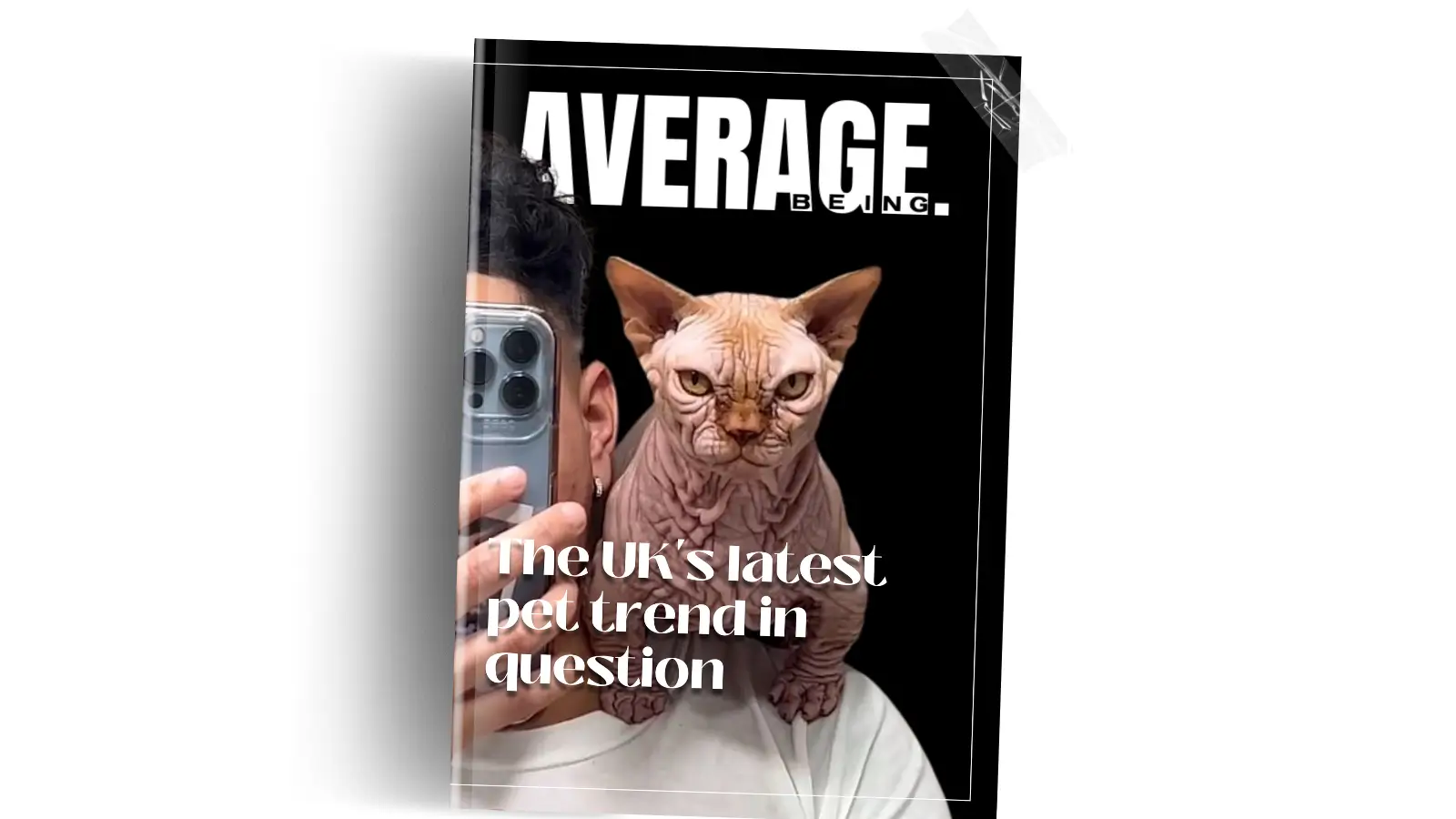Ever heard of a bullycat?
No, it’s not a feline version of the schoolyard troublemaker. It’s the latest pet trend taking social media by storm, and it’s got animal experts in the UK sounding the alarm. But what’s all the fuss about?
First off, what exactly is a bullycat?
Picture this: a hairless Sphynx-like cat with legs shorter than your average feline, skin so wrinkly it’d make a Shar Pei jealous, and a body shape that’s about as far from natural as you can get. These cats are turning heads on TikTok, Instagram, and Facebook, but not for the reasons you might think.
Lately, a disturbing new trend has surfaced in the UK’s cat-loving community. These so-called “bullycats” have been gaining popularity on social media platforms like TikTok and Instagram, but there’s a dark side to this viral sensation.
What’s the issue with these unusual-looking cats, and why are experts warning against them?
Bullycats are a recently developed breed of hairless, sphynx-like cats with short, bowed legs and wrinkled skin, and they are facing severe health issues due to their unnatural breeding. Animal welfare organizations in the UK, including the Naturewatch Foundation and the RSPCA, are raising alarms over the ethical concerns and potential suffering these cats endure.
So, why all the drama?
Why Are Bullycats Causing a Stir in the UK?
Well, it turns out these Instagram-ready cats come with a laundry list of potential health issues. We’re talking about skin infections, joint problems, and a lifespan that’s about as short as their stubby legs.
Dr. Dan O’Neill from the Royal Veterinary College dropped a bombshell: Sphynx cats (the bullycat’s hairless cousins) typically live just 6.7 years, compared to the average cat’s 11.7 years. That’s like taking five years off your cat’s life just for looks!
But wait, there’s more!
The breeding practices that produce these cats often lead to conditions like skin infections, sunburn, and joint pain, making life a daily struggle for them.
The RSPCA (that’s the Royal Society for the Prevention of Cruelty to Animals, for those not up on their UK acronyms) is also weighing in. They’re worried about those wrinkly skin folds becoming a breeding ground for nasty skin conditions. And those short legs?
They’re not just for show – they could lead to some serious joint pain down the road.
Now, you might be thinking, “But they look so cool on social media!” And sure, they might rack up the likes on Instagram. But here’s the thing: These cats aren’t just a fashion accessory. They’re living, breathing animals that could be suffering for our entertainment.
The trend has its roots in the United States (because, of course, it does), but it’s now made its way across the pond to the UK. And just like the controversial XL Bully dogs (which, by the way, are now illegal to own in England and Wales without special permission), these cats are raising eyebrows and concerns.
But why are people suddenly so obsessed with these unusual-looking cats?
It’s all about standing out in the crowded world of social media. In a sea of fluffy tabbies and elegant Siamese, a wrinkly, hairless cat with stubby legs is bound to get attention. But at what cost?
Experts are warning that this trend could lead to a whole host of problems. For starters, there’s the issue of abandonment. Remember when everyone wanted a Dalmatian after “101 Dalmatians” came out?
Yeah, that didn’t end well for a lot of those dogs. The fear is that once the novelty wears off, these high-maintenance cats could end up in shelters.
Let’s talk about those vet bills. With all the potential health issues these cats face, owners could be looking at some seriously expensive medical care. It’s not just about the initial cost of buying one of these trendy cats – it’s about the lifetime of care they’ll need.
So, what’s a cat lover to do?
The RSPCA has a suggestion: Why not adopt a rescue cat instead? There are plenty of lovable felines in shelters just waiting for their forever homes. They come with all their fur and properly sized-legs!
Averagebeing’s Take: Bullycats might look interesting, but the price they pay for health and happiness is far too high. As much as we love to see cute pets on social media, we need to remember that no amount of likes is worth the suffering of these animals. If you’re thinking of adding a furry friend to your family, consider adoption over buying into unhealthy trends.

